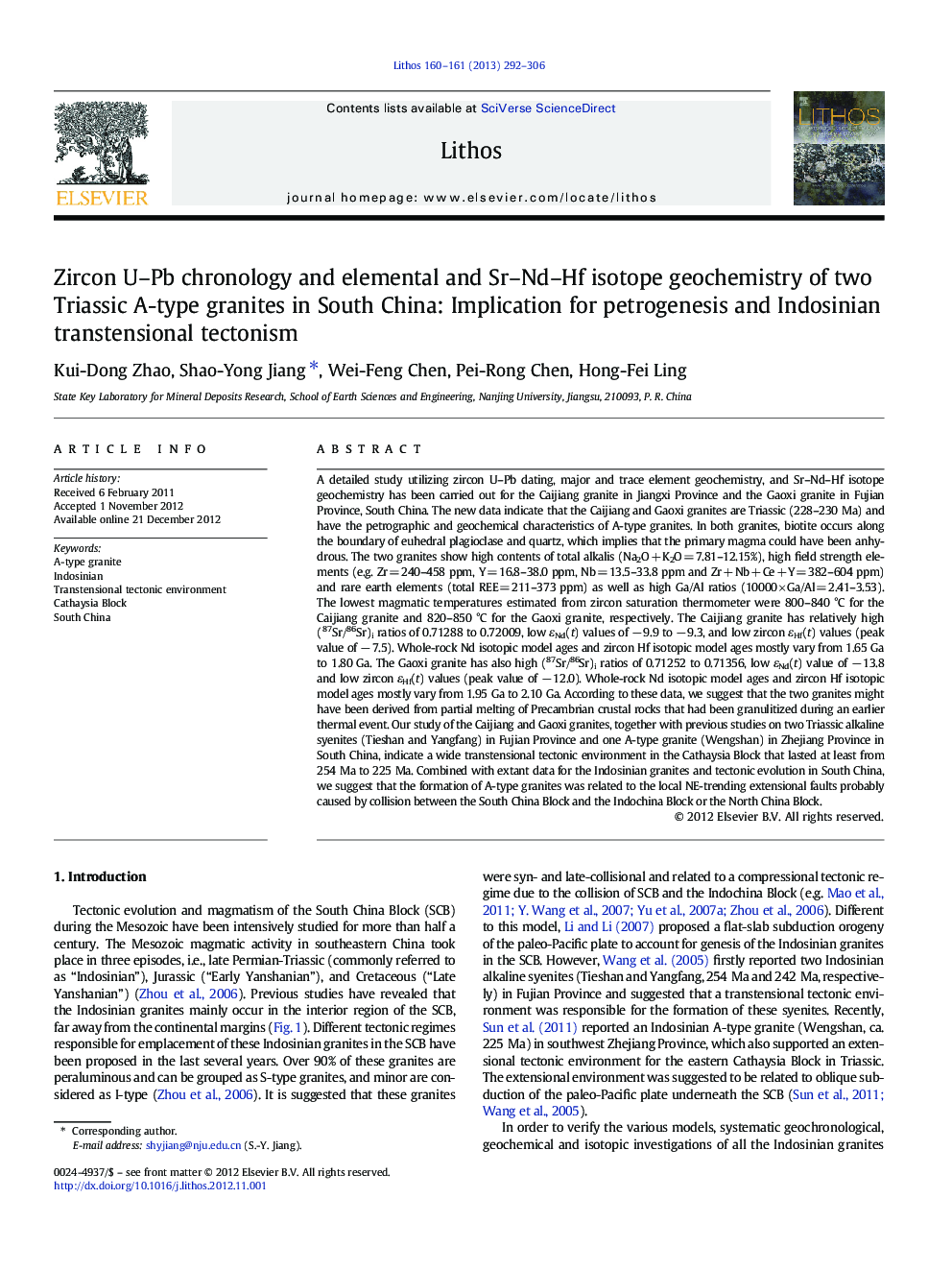| کد مقاله | کد نشریه | سال انتشار | مقاله انگلیسی | نسخه تمام متن |
|---|---|---|---|---|
| 4716339 | 1638696 | 2013 | 15 صفحه PDF | دانلود رایگان |

A detailed study utilizing zircon U–Pb dating, major and trace element geochemistry, and Sr–Nd–Hf isotope geochemistry has been carried out for the Caijiang granite in Jiangxi Province and the Gaoxi granite in Fujian Province, South China. The new data indicate that the Caijiang and Gaoxi granites are Triassic (228–230 Ma) and have the petrographic and geochemical characteristics of A-type granites. In both granites, biotite occurs along the boundary of euhedral plagioclase and quartz, which implies that the primary magma could have been anhydrous. The two granites show high contents of total alkalis (Na2O + K2O = 7.81–12.15%), high field strength elements (e.g. Zr = 240–458 ppm, Y = 16.8–38.0 ppm, Nb = 13.5–33.8 ppm and Zr + Nb + Ce + Y = 382–604 ppm) and rare earth elements (total REE = 211–373 ppm) as well as high Ga/Al ratios (10000 × Ga/Al = 2.41–3.53). The lowest magmatic temperatures estimated from zircon saturation thermometer were 800–840 °C for the Caijiang granite and 820–850 °C for the Gaoxi granite, respectively. The Caijiang granite has relatively high (87Sr/86Sr)i ratios of 0.71288 to 0.72009, low εNd(t) values of − 9.9 to − 9.3, and low zircon εHf(t) values (peak value of − 7.5). Whole-rock Nd isotopic model ages and zircon Hf isotopic model ages mostly vary from 1.65 Ga to 1.80 Ga. The Gaoxi granite has also high (87Sr/86Sr)i ratios of 0.71252 to 0.71356, low εNd(t) value of − 13.8 and low zircon εHf(t) values (peak value of − 12.0). Whole-rock Nd isotopic model ages and zircon Hf isotopic model ages mostly vary from 1.95 Ga to 2.10 Ga. According to these data, we suggest that the two granites might have been derived from partial melting of Precambrian crustal rocks that had been granulitized during an earlier thermal event. Our study of the Caijiang and Gaoxi granites, together with previous studies on two Triassic alkaline syenites (Tieshan and Yangfang) in Fujian Province and one A-type granite (Wengshan) in Zhejiang Province in South China, indicate a wide transtensional tectonic environment in the Cathaysia Block that lasted at least from 254 Ma to 225 Ma. Combined with extant data for the Indosinian granites and tectonic evolution in South China, we suggest that the formation of A-type granites was related to the local NE-trending extensional faults probably caused by collision between the South China Block and the Indochina Block or the North China Block.
► The Caijiang and Gaoxi granites in South China were emplaced at 228–230 Ma.
► The petrology and geochemistry of the granites reveal an A-type affinity.
► The granites were derived from partial melting of Precambrian crustal rocks.
► A wide transtensional tectonic environment occurred in Cathaysia Block at Triassic.
Journal: Lithos - Volumes 160–161, February 2013, Pages 292–306